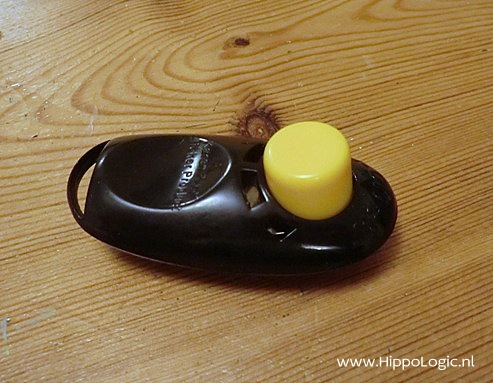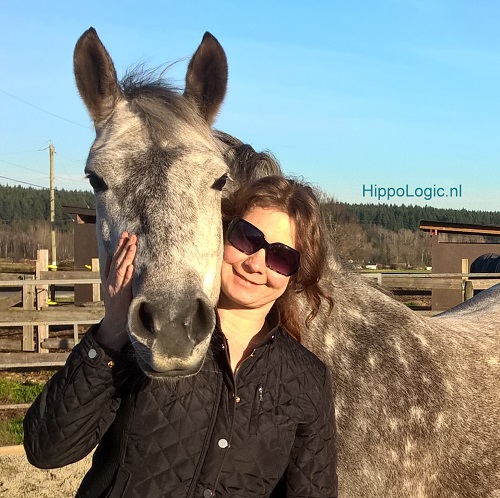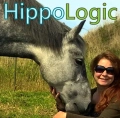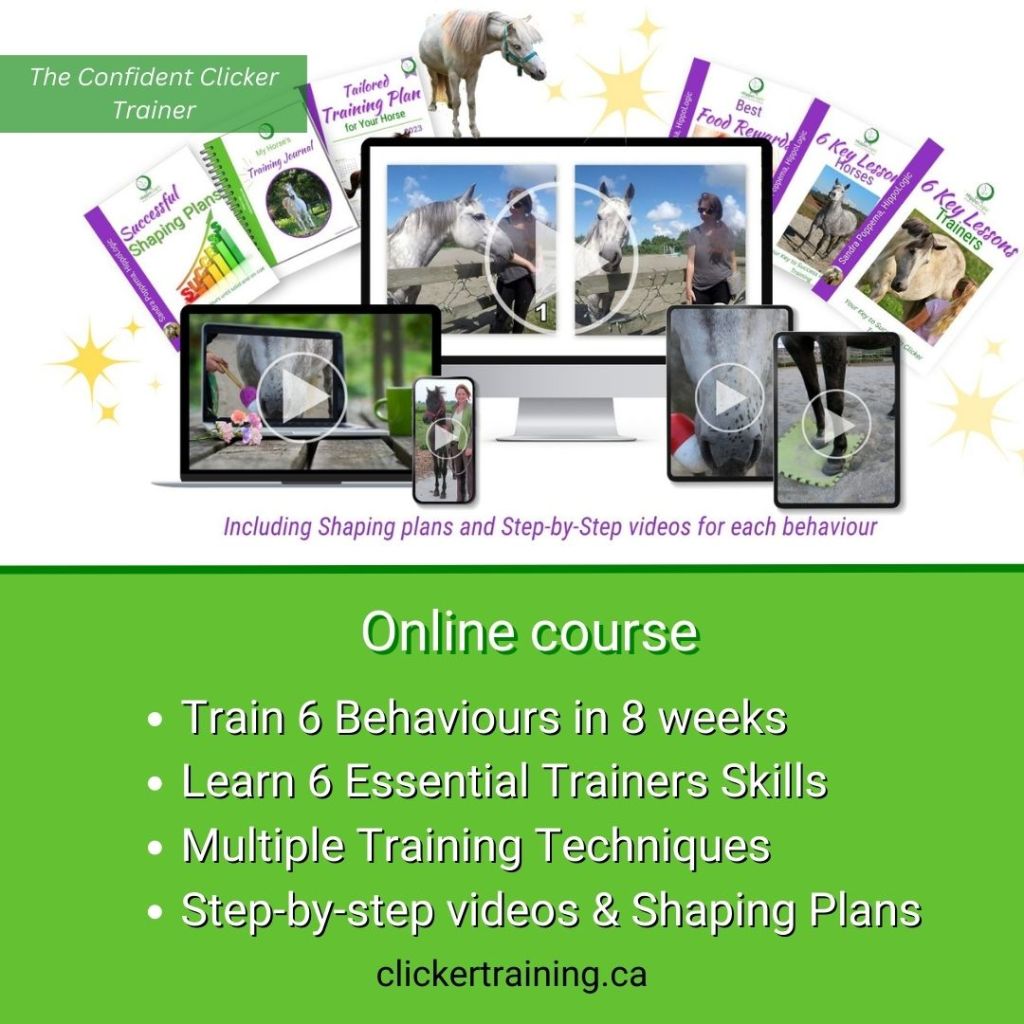I did a little research and asked positive reinforcement trainers ‘What is your biggest struggle or concern?’ Why are not more people into clicker training their horses? Here are some answers I got.
Why horse people don’t use R+ according to clicker trainers
- “I find the biggest hurdle is the food. It is so ingrained in people not to hand feed.”
- “Newbies to marker training can create cookie monsters who bite. It’s sad, but true. Every time that happens and the person tells their story anyone who hears it has a negative impression about the possibility of using something as crazy as clicker training with their horse. And they believe that it creates biters and muggers, because in reality, it can when improperly practised. So as we share the wonder and magic of this method, we also have a responsibility to make sure we keep this in mind.”
- “I think the problem is people are not patient enough. They don’t want to listen they are physical with horses. They want it quick.”
- “We all love horses and find humans irritating, it takes a special person to be a good coach to both.”
Let’s make some changes!
How can positive reinforcement trainers and coaches overcome these hurdles? I know these are quotes, but I choose these ones because they are very common. We’ve all heard these or very similar ones, right? Here is what we can do to
- Focus on the solution (results in R+ training!), not on the problem (people focusing on the carrots). If horse people think “It’s all about treats” in clicker training I think it’s
 because we (‘we’ = R+ trainers, instructor or not) present it like that (almost) all the time! Let’s start promoting clicker training as a training method that gets RESULTS! That’s what other methods do: they don’t emphasize the how (coercion, aversives, sometimes even pain inflicting methods).
because we (‘we’ = R+ trainers, instructor or not) present it like that (almost) all the time! Let’s start promoting clicker training as a training method that gets RESULTS! That’s what other methods do: they don’t emphasize the how (coercion, aversives, sometimes even pain inflicting methods). - Yes, novice trainers and new horse owners can create ‘cookie monsters‘. It happens and let’s not deny this fact. This is not a specific clicker training problem: it happens in all training where inexperienced people start training horses. How many horses got horrified by whips or training sticks? How many horses are head shy or don’t let them catch themselves in the pasture? (I still get giggly when I hear the word ‘catch’ because it is so much the opposite of what I do, but it is what some people have to do). Let’s focus on the amazing long-lasting results (intermediate and expert) clicker trainers accomplish!
- I think it’s a myth that clicker training takes longer than training a horse with coercion. It only takes longer if we want to accomplish 2 goals in one go: training the horse and teaching the owner new ways of training that are almost opposite of what they have learned in the past. Let’s point out how fast horses learn new behaviours and skills! (No other training method I know of emphasizes how difficult it is or can be for the person to learn this method X, Y, Z. So let’s just quit doing that.)
- I love horses and humans ♥. That’s why I got into coaching: I not only want the skills in the horse but also in the horse person. So the next horse can benefit from it too, and the next one. I hope more people will learn and start teaching learning theory and will emphasize the benefits of positive reinforcement (R+) training over traditional and natural horsemanship training (and other methods based on R-). Let’s make the world a better place and start with ourselves: Be the change you want to see in the world! You never know who you inspire!
Questions? Get a free discovery call with Sandra
If you want to get to know me or have questions about clicker training your horse or want to become a clicker instructor, book your free discovery call. Click.
Ultimate Horse Training Formula, Your Key to Success

Would you like to use clicker training in your every day training, learn to use it in all situations and for all horses?
If you are ready to get the results in training you really, really want this is the Ultimate Horse Training Formula is for you. Do you want…
- a well-trained horse? Trained by you?
- more knowledge and skills to clicker train horses?
- more confidence in your training skills?
Join HippoLogic’s online training program for clicker trainers the Ultimate Horse Training Formula. In this course you will learn to train horses with positive reinforcement. You’ll improve your training skills and you’ll develop skills trainers need in order to be successful, because my specialty is to help people implement their knowledge into practice.
Sandra Poppema, B.Sc.
I help horse owners get the results in training they really, really want with joy and easy for both horse and human. I always aim for win-win!
Sign up for HippoLogic’s newsletter (it’s free and it comes with a gift) or visit HippoLogic’s website and join my online course Ultimate Horse Training Formula in which you learn the Key Lessons, Your Key to Success in Clicker Training.









 Train wanted behaviour quickly
Train wanted behaviour quickly Feeding treats as a reward won’t necessarily get you the desired outcome. You have to use treats as reinforcer. To strengthen behaviour, not just to reward behaviour.
Feeding treats as a reward won’t necessarily get you the desired outcome. You have to use treats as reinforcer. To strengthen behaviour, not just to reward behaviour.











You must be logged in to post a comment.